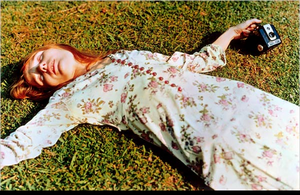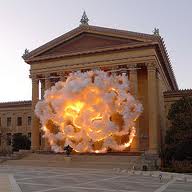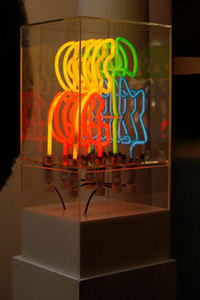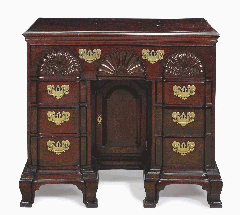What did you think about seeing the Musee d’Orsay draped with a gigantic banner advertising Chanel No. 5? Or the Doge’s Palace in Venice sporting an ad for Bulgari?
Both pictures were published in The New York Times on Monday, accompanying an article about the shaky status of some European arts institutions — and their efforts to create new revenue streams. (Even nastier, though not shown, was the disclosure that a couple of “shiny new Dany electric cars” were placed in the Ara Pacis Museum in Rome, which is nasty enough already.)
 Last week, I listened to a similar story from Gianandrea Noseda, the Music Director of the Teatro Regio Torino, Chief Conductor of the BBC Philharmonic, Artistic Director of the Stresa Festival, and the Victor de Sabata Guest Conductor of the Pittsburgh Symphony.
Last week, I listened to a similar story from Gianandrea Noseda, the Music Director of the Teatro Regio Torino, Chief Conductor of the BBC Philharmonic, Artistic Director of the Stresa Festival, and the Victor de Sabata Guest Conductor of the Pittsburgh Symphony.
Noseda was here to conduct La Traviata at the Metropolitan Opera, but he also wanted to let those who love Italian culture — and how could one not? — know that the Berlusconi government was about to zero out support for opera and classical music.
Without tax deductions for contributions, Italy has little culture of philanthropy for the arts (excluding traditions in previous eras of patronage). But Noseda would like to cultivate that culture. He’s starting here by talking to wealthy Italian-Americans, particularly those who moved here, or whose ancestors moved here, fairly recently.
“We have to find a mixed system” of state and philanthropic support, he said — a system more like the American system.
Indeed, as much as we complain here about the lack of state support, our system is better — and Europe is moving in our direction, like it or not.
Noseda spoke from the heart about his love for his country and his culture. I have much sympathy for him, and I wish him luck. At least he’s trying. But as I said at the table then, Americans are unlikely to provide the critical support he needs. Perhaps some money from Americans will help him spark the philanthropic culture needed in Italy, but it’s unlikely to be big enough to solve Italy’s problems.
On another note, Noseda mentioned that 2011 is the 150th anniversary of the unification of modern Italy, and there’ll be many celebrations, including concerts in Torino, the first national capital. Time to plan a trip? Cultural tourism would help.
Photo Credit: Courtesy of Opera America

 This year, the NFF would like to gain a broader, more accurate picture of the non-profit sector, and though I have never made a request of readers like this, I’ve agreed to help with the outreach by posting about it. I’m doing it because, as regular readers know, I frequently advocate for
This year, the NFF would like to gain a broader, more accurate picture of the non-profit sector, and though I have never made a request of readers like this, I’ve agreed to help with the outreach by posting about it. I’m doing it because, as regular readers know, I frequently advocate for 
 Best Project in a Public Space:
Best Project in a Public Space:
 So it was last week, when an 18th Century American mahogany bureau table sold at Christie’s for $5.7 million — against a presale estimate of $700,000 to $900,000.
So it was last week, when an 18th Century American mahogany bureau table sold at Christie’s for $5.7 million — against a presale estimate of $700,000 to $900,000.